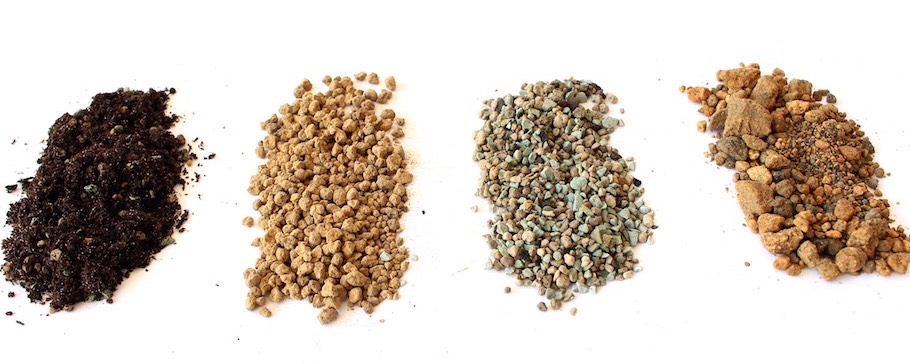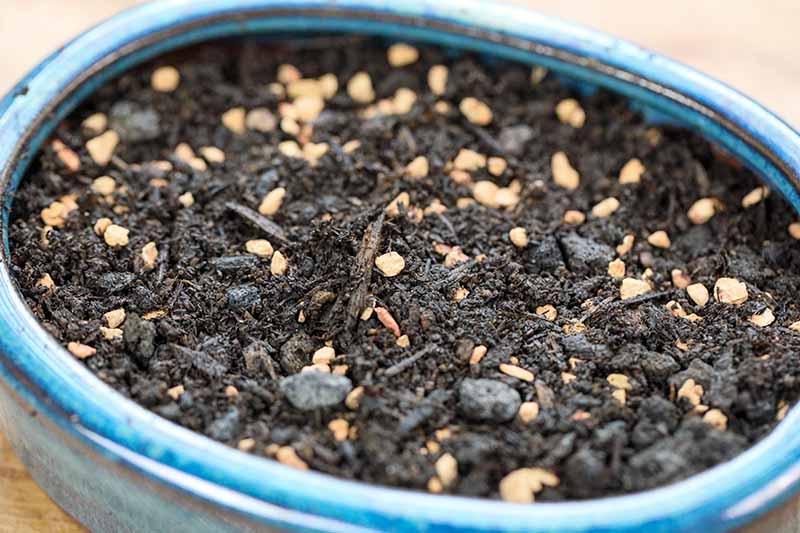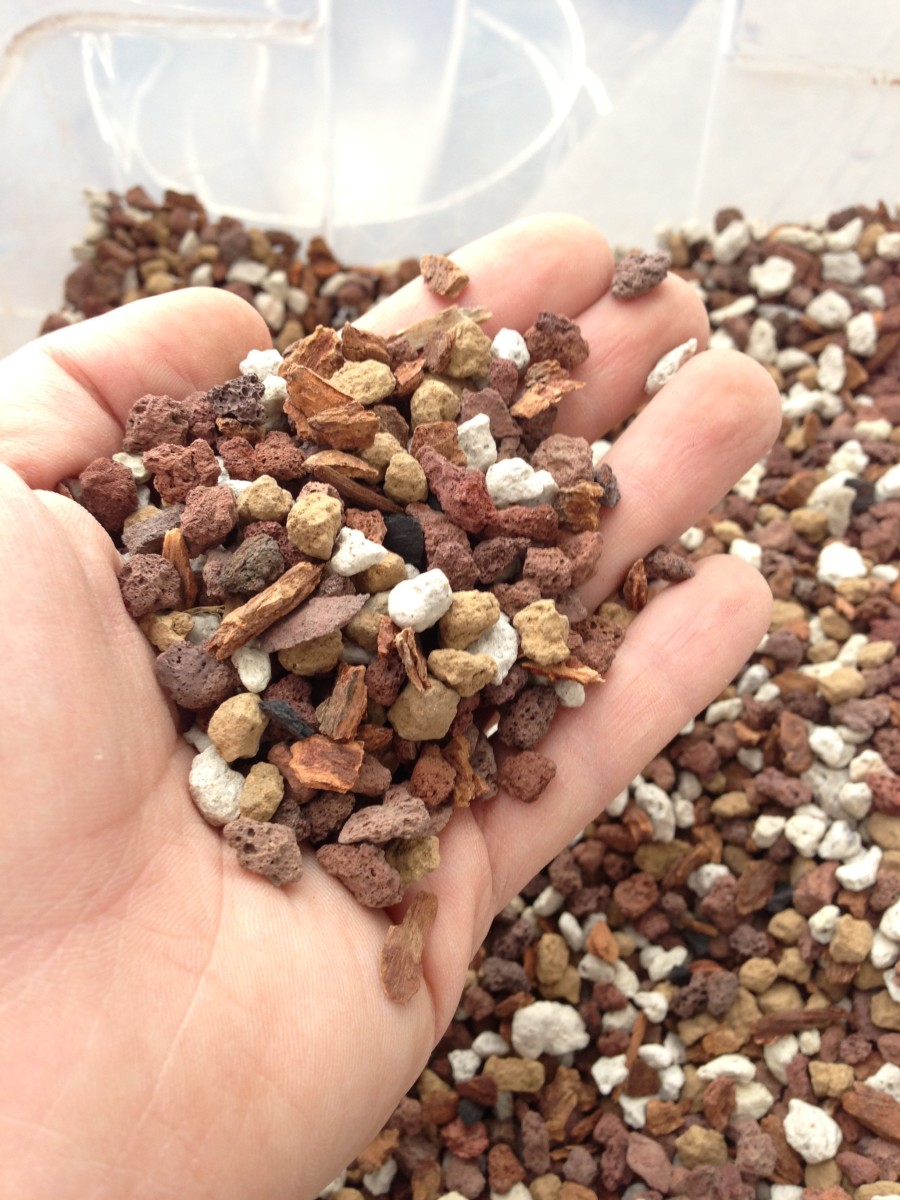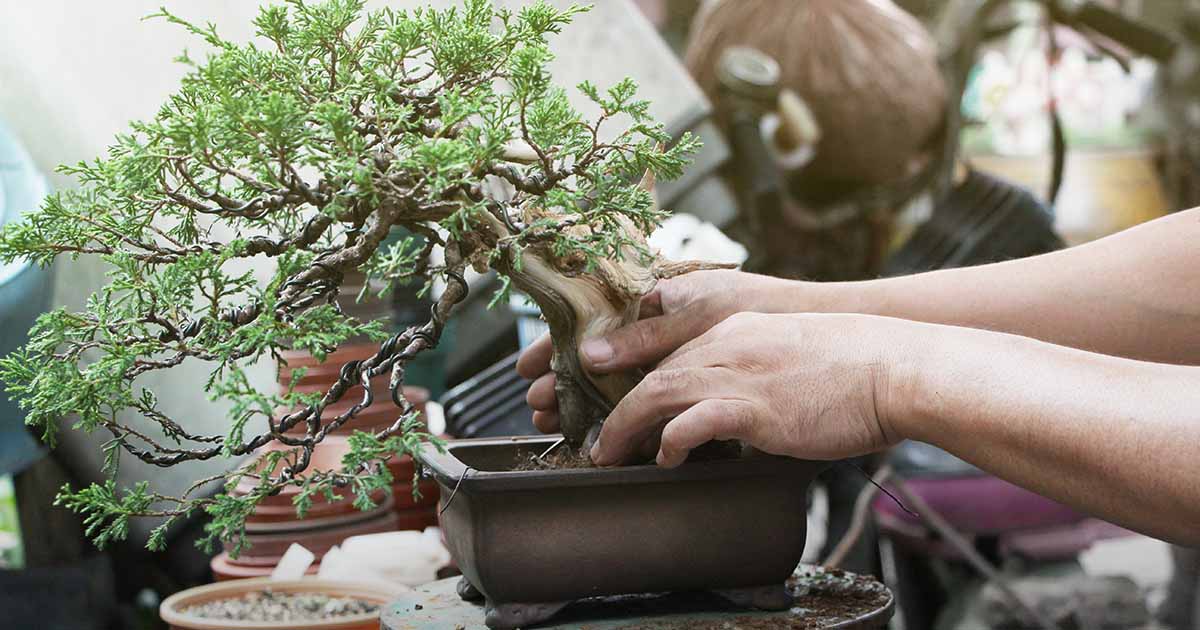In the following paragraphs, we will examine the different types of soil and substrates Utilized in bonsai cultivation, together with organic and natural and inorganic options.
We'll also discover recommended soil mixtures for many bonsai species, like deciduous, coniferous, and indoor versions. From akadama and pumice to moss and river sand, we are going to dive into your fascinating entire world of bonsai soil and make it easier to realize why It can be a crucial Section of cultivating these exquisite trees.

Bonsai soil
What is bonsai soil?
Bonsai soil is a specialized type of soil that is specifically formulated for growing and maintaining bonsai trees. Unlike regular garden soil, bonsai soil is well-draining and provides the necessary nutrients and moisture balance for the tree's root system. The composition of bonsai soil is carefully designed to meet the unique needs of bonsai trees, ensuring their health and longevity.
The importance of bonsai soil
The choice of soil plays a crucial role in the success of your bonsai tree. The right soil provides optimal drainage, allowing excess water to flow freely and preventing root rot. It also promotes a healthy and well-developed root system, which is essential for the overall health and growth of the tree. Bonsai soil retains moisture while allowing air to reach the roots, striking the perfect balance for the tree's needs. Choosing the right bonsai soil is essential for maintaining a healthy and thriving bonsai tree.
Bonsai substrates
What are bonsai substrates?
Bonsai substrates refer to the different materials that can be used to create the ideal soil composition for bonsai trees. These substrates are carefully chosen to meet the specific needs of different species of bonsai trees and to ensure proper water drainage and nutrient availability.
Different types of bonsai substrates
There are various types of bonsai substrates available, each with its own unique characteristics and benefits. Some common bonsai substrates include:
- Organic materials: These include ingredients such as bark, peat moss, and coconut coir. Organic substrates help retain moisture and provide essential nutrients to the bonsai tree.
- Inorganic elements: These contain components like pumice, lava rock, and akadama. Inorganic substrates supply exceptional drainage, making certain that extra drinking water will not accumulate throughout the roots from the bonsai tree.
- Soil amendments: These are definitely substances that are extra into the soil mixture to boost its Qualities. Examples of soil amendments involve perlite, vermiculite, and sand. They Increase the soil's aeration, drinking water-holding capacity, and nutrient availability.
By knowing the differing types of bonsai substrates as well as their Qualities, it is possible to choose the best suited a single on your bonsai tree's needs.
Organic or Inorganic Soils
Natural soils for bonsai
Natural soils for bonsai are composed of all-natural materials for instance bark, peat moss, coconut coir, and compost. These resources supply a abundant supply of nutrients to the bonsai tree and advertise healthier root growth. Organic and natural soils also have excellent drinking water retention Attributes, making certain the tree gets suitable moisture amongst watering periods. Nevertheless, it is vital to note that organic soils may well break down as time passes and turn out to be compacted, bringing about inadequate drainage and possible root difficulties.
Inorganic soils for bonsai
Inorganic soils for bonsai encompass supplies like pumice, lava rock, akadama, and soil amendments like perlite or vermiculite. These resources have exceptional drainage Attributes, preventing waterlogged soil and marketing aeration throughout the roots. Inorganic soils are most popular by lots of bonsai lovers because of their longevity and talent to deliver a secure ecosystem to the bonsai tree's root method. However, They could demand a lot more Regular watering and additional fertilization, as they do not maintain just as much moisture or nutrients as natural soils.
Advantages and drawbacks of employing natural and organic and inorganic soils for bonsai
Deciding upon amongst natural and inorganic soils on your bonsai tree is dependent upon numerous things, including the particular species of tree, your climate, and private Choices. Listed here are the pluses and minuses of each:
Natural soils:
- Pros: Offer nutrients, great h2o retention, promote healthier root advancement.
- Drawbacks: Might stop working eventually, probable for bad drainage if not thoroughly taken care of.
Inorganic soils:
- Pros: Fantastic drainage, long-lasting, secure natural environment for roots.
- Downsides: Fewer water retention, could need extra Regular watering and fertilization.
By considering the advantages and disadvantages of the two organic and inorganic soils, you can make an knowledgeable determination according to the precise requirements of the bonsai tree.
Soil factors
Crucial components of bonsai soil
Bonsai soil is often composed of three most important components: grit, natural and organic issue, and clay. These components perform together to build the ideal soil composition for the bonsai tree's root program.
- Grit: Grit, including sand or perlite, delivers drainage and aeration during the soil. It can help prevent waterlogging and makes it possible for air to reach the roots.
- Organic and natural make any difference: Natural and organic make a difference, for instance compost or bark, supplies nutrients into the bonsai tree. What's more, it helps keep humidity and Increase the soil's Over-all framework.
- Clay: Clay particles present some drinking water retention attributes and assist bind the soil jointly. Nonetheless, a lot of clay may lead to bad drainage and compaction.
Position of every soil component
Just about every soil component plays a vital part in making a very well-well balanced and balanced ecosystem for that bonsai tree's roots.
- Grit: Grit supplies the required drainage and aeration inside the soil. It prevents the roots from sitting in stagnant water, lessening the chance of root rot and endorsing All round root well being.
- Organic and natural subject: Organic make any difference provides essential nutrients on the bonsai tree. It aids in dampness retention and contributes to the general structure from the soil.
- Clay: Clay particles help bind the soil alongside one another and supply some drinking water retention capacity. Having said that, it is important to stability the level of clay to stop difficulties like poor drainage and compaction.
By being familiar with the roles of each and every soil component, you can develop a balanced bonsai soil combine that meets the specific needs of the tree.

Recommended Bonsai soil mixtures
Common bonsai soil mixtures
There are several common bonsai soil mixtures that have been proven effective for various types of bonsai trees. These mixtures typically consist of a combination of inorganic substrates, organic matter, and soil amendments.
Some of the commonly used bonsai soil mixtures include:
- Akadama, pumice, and lava rock: This mixture is popular among bonsai enthusiasts for its excellent drainage and water retention properties.
- Akadama, lava rock, and natural make any difference: This mixture combines some great benefits of inorganic substrates Along with the nutrient-prosperous Houses of organic matter.
- Pumice, perlite, and bark: This mixture gives great drainage and aeration though retaining some dampness and providing nutrients.
These are typically only a few examples of bonsai soil mixtures, and The perfect mixture will rely on the specific requirements within your bonsai tree as well as your climate.
Things to contemplate when deciding upon a bonsai soil mixture
When choosing a bonsai soil mixture, it is important to contemplate the next variables:
- Species of bonsai tree: Various species have unique humidity and nutrient prerequisites. Exploration the specific needs of your respective tree to choose a soil combination that meets its prerequisites.
- Local climate: The climate you reside in can have an affect on the humidity retention Houses from the soil. Look at the regular humidity and temperature in your neighborhood when choosing a soil mixture.
- Watering patterns: Your personal watering patterns and schedule really should align with the soil mixture you decide on. Some mixtures need far more Recurrent watering, while others retain dampness for for a longer time intervals.
- Finances: Some soil factors could be costlier than Some others. Take into consideration your spending budget when selecting a soil combination.
By taking these variables into consideration, you may go with a bonsai more info soil mixture that gives the best escalating situations for your tree.
Deciduous Bonsai soil
Best soil composition for deciduous bonsai
Deciduous bonsai trees, which include maple or birch, have precise soil demands to help their expansion and well being. The top soil composition for deciduous bonsai here ordinarily includes a mixture of organic subject, inorganic substrates, and soil amendments.
A advised soil composition for deciduous bonsai may perhaps contain:
- Akadama: Supplies fantastic h2o retention although enabling for drainage. It also releases nutrients bit by bit over time.
- Pumice: Encourages aeration and drainage in the soil, avoiding waterlogging.
- Bark or peat moss: Provides organic and natural make a difference for the soil, delivering nutrients and moisture retention.
This soil composition makes sure that the roots of deciduous bonsai trees get the appropriate balance of humidity, nutrients, and oxygen for best development.

Coniferous and Pine soil
Ideal soil mixture for coniferous and pine bonsai
Coniferous and pine bonsai trees have specific soil requirements due to their water retention needs and preference for acidic soil. An ideal soil mixture for coniferous and pine bonsai should provide good drainage while retaining moisture and maintaining the desired pH level.
A recommended soil mixture for coniferous and pine bonsai may include:
- Akadama: Provides excellent water retention while allowing for sufficient drainage. It releases nutrients slowly over time.
- Pumice: Promotes aeration and drainage inside the soil, avoiding waterlogged roots.
- Peat moss: Provides organic make a difference and acidity into the soil, building a perfect pH level for coniferous and pine trees.
This soil mixture ensures that the roots of coniferous and pine bonsai trees receive the right balance of humidity, nutrients, and acidity for his or her specific needs.
Akadama
What is akadama?
Akadama is really a type of clay soil which is extensively used in bonsai cultivation. It really is noted for its excellent water retention Homes, which be certain a steady supply of dampness into the bonsai tree's roots. Akadama can also be prized for its power to release nutrients little by little over time, providing a dependable source of nourishment to the tree.
Advantages of working with akadama in bonsai soil
Employing akadama in bonsai soil presents several Rewards:
- Drinking water retention: Akadama has Excellent h2o retention Attributes, allowing for it to carry dampness with no turning into waterlogged. This ensures that the bonsai tree's roots receive a continual offer of h2o, advertising and marketing healthful progress.
- Nutrient launch: Akadama bit by bit releases nutrients to the soil after a while, furnishing a dependable source of nourishment with the bonsai tree. This cuts down the necessity for Regular fertilization and will help manage a balanced nutrient profile.
- Aeration: Despite its drinking water retention capabilities, akadama also presents adequate aeration to the bonsai tree's roots. It enables air to get to the root technique, preventing concerns for example root rot as a result of insufficient oxygen.
By incorporating akadama into your bonsai soil, it is possible to produce an ideal escalating atmosphere in your tree, making certain its overall health and vitality.

Lava rock
How lava rock benefits bonsai soil
Lava rock is a popular component in bonsai soil mixtures due to its excellent drainage and aeration properties. It is typically used in conjunction with other substrates to create the ideal soil composition for bonsai trees.
The benefits of lava rock in bonsai soil include:
- Drainage: Lava rock provides excellent drainage, preventing waterlogging and ensuring that excess water flows freely through the soil. This helps prevent root rot and provides a healthy environment for the roots to thrive.
- Aeration: The porous mother nature of lava rock lets air to circulate throughout the soil, furnishing oxygen to the bonsai tree's root method. Right aeration is important for healthful root development and Total tree growth.
- Longevity: Lava rock can be a durable content that does not stop working very easily. This ensures that the soil composition stays stable after a while, cutting down the necessity for Repeated soil replacements.
Lava rock is accessible in different measurements and designs, enabling for personalisation determined by the specific wants of one's bonsai tree and soil necessities.
Different types of lava rock
You will find differing types of lava rock that can be Utilized in bonsai soil mixtures, like:
- Black lava rock: Black lava rock is really a usually used materials in bonsai soil mixtures. It offers superb drainage Qualities and provides an aesthetic component to the overall presentation from the bonsai tree.
- Red lava rock: Red lava rock is an additional common preference in bonsai soil mixtures. It provides equivalent drainage and aeration Added benefits as black lava rock but has a distinct reddish color that provides visual fascination on the container.
Both equally black and crimson lava rocks are extensively out there and can be very easily integrated into your bonsai soil combination.
Potting
Important methods for thriving bonsai potting
Potting is actually a critical procedure in bonsai cultivation, since it right impacts the overall health and development from the tree's roots. Here are several necessary techniques for productive bonsai potting:
- Pick the ideal pot size: Find a bonsai pot that allows for root growth when nevertheless offering a snug in shape. Prevent pots which can be also huge, because they may result in abnormal soil humidity and lousy root development.
- Use bonsai wire: Secure the tree inside the pot employing bonsai wire to guarantee security. This stops the tree from shifting or getting to be uprooted throughout watering or sturdy winds.
- Trim and unfold the roots: Just before potting the bonsai tree, meticulously trim and unfold out the roots. This encourages outward development and prevents root tangling or root-sure challenges.
- Increase mesh screens: Spot mesh screens in excess of the drainage holes at the bottom in the pot to avoid soil erosion and make certain appropriate drainage.
- Use clean bonsai soil: When potting, generally use fresh new bonsai soil to deliver the mandatory nutrients and best increasing problems for that roots.
By adhering to these crucial suggestions, you'll be able to assure An effective potting system and advertise the overall well being and development of your bonsai tree.
The job of bonsai pots in soil humidity control
Bonsai pots Enjoy a vital function in soil moisture Command, specifically impacting the overall health and development of the tree. Bonsai pots are generally shallow and also have drainage holes, enabling excess h2o to escape and avoiding the soil from starting to be waterlogged.
The look of bonsai pots promotes evaporation and air circulation, which allows control soil moisture levels. The shallow depth and huge opening on the pot expose a lot more surface spot on the soil towards the air, aiding in humidity evaporation. This helps prevent the roots from sitting in excessively soaked soil, cutting down the risk of root rot along with other h2o-relevant problems.
On top of that, the drainage holes in bonsai pots let any excessive h2o to flee, stopping waterlogged soil and promoting aeration throughout the roots. Correct aeration is important for the wellness and enhancement of the basis system, guaranteeing the bonsai tree receives the mandatory oxygen for advancement.
By utilizing bonsai pots suitable for powerful moisture Management, you are able to make a positive surroundings for your personal bonsai tree's roots and encourage its overall overall health and vitality.
In conclusion, deciding on the suitable bonsai soil is vital for that achievement and wellbeing of one's bonsai tree. Knowledge the different types of bonsai substrates, the purpose of natural and inorganic soils, The true secret parts of bonsai soil, and the different recommended soil mixtures will assist you to provide the optimum escalating situations for your bonsai tree. Whether you do have a deciduous or coniferous bonsai, incorporating resources like akadama and lava rock can improve the soil's drainage and nutrient availability. In addition, listening to potting techniques and making use of bonsai pots designed for moisture Handle will further aid the thriving progress within your bonsai tree. With correct understanding and implementation of bonsai soil procedures, you could enjoy the splendor and artistry of bonsai cultivation For some time to come.
